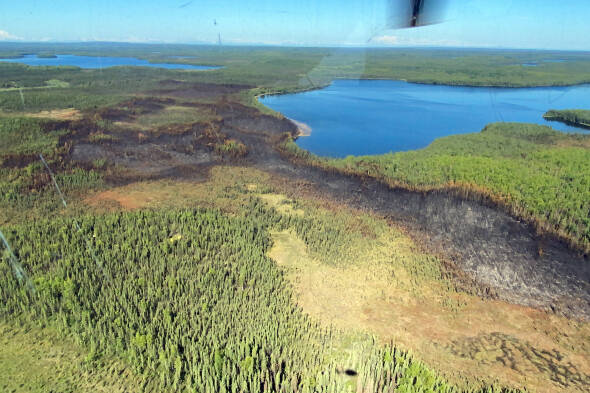Alaska’s wildfire season begins Friday, April 1, during which time burn permits are required to legally use burn barrels or to burn brush piles on state, municipal or private land. The wildfire season ends on Aug. 31 — unless extended via an emergency order.
The Alaska Department of Natural Resources urged Alaskans in a Tuesday press release to burn brush now, when fire danger is low, instead of waiting until conditions dry out and the potential for wildfires are higher.
“Despite a well above-average snowpack in many parts of the state this past winter, it’s too early to predict what this summer’s fire season holds,” the department said in the release.
Burn permits are free and are available at state forestry offices, including in Soldotna, and at local fire departments. Permits can also be printed online at dnr.alaska.gov/burn. Permits are not required for camping, cooking or warming fires less than 3 feet in diameter and with flames less than 2 feet high.
Division of Forestry Deputy Director of Fire Protection Norm McDonald is quoted in the release as saying that human-caused fires account for about 75% of the fires the forest the division responds to.
“Most are avoidable,” McDonald is quoted as saying of the fires.
The permit requirement is intended to minimize the number of human-caused fires in the state by offering guidelines to permit holders that relate to the size of burn piles and what materials can be burned, among other things. People who violate burn permit requirements can be cited and held criminally and civilly liable for damage caused by an escaped fire, the department said.
Above-average snowpacks in many parts of Alaska this season, the division said in the release, are expected to cause a later melt than expected, which could delay the start of the fire season. Snowpack aside, the division said weather in May and early June has “far more influence” on fire seasons.
Alaska has seen earlier, longer and more intense fire seasons over the last 20 years, the division said, with five of the state’s 10 largest fires since 1950 occurring since 2004. In a typical year, the division said, Alaska has about 500 wildfires that burn between 650,000 and 1 million acres.
Peninsula firefighters spent multiple days last year working to contain the Loon Lake Fire, about 10 miles northeast of Sterling, which was caused by a lightning strike. The fire, which grew to around 102 acres, was eventually fully contained.
More information about wildland fires in Alaska can be found on the Department of Natural Resources’ website at forestry.alaska.gov.
Reach reporter Ashlyn O’Hara at ashlyn.ohara@peninsulaclarion.com.

